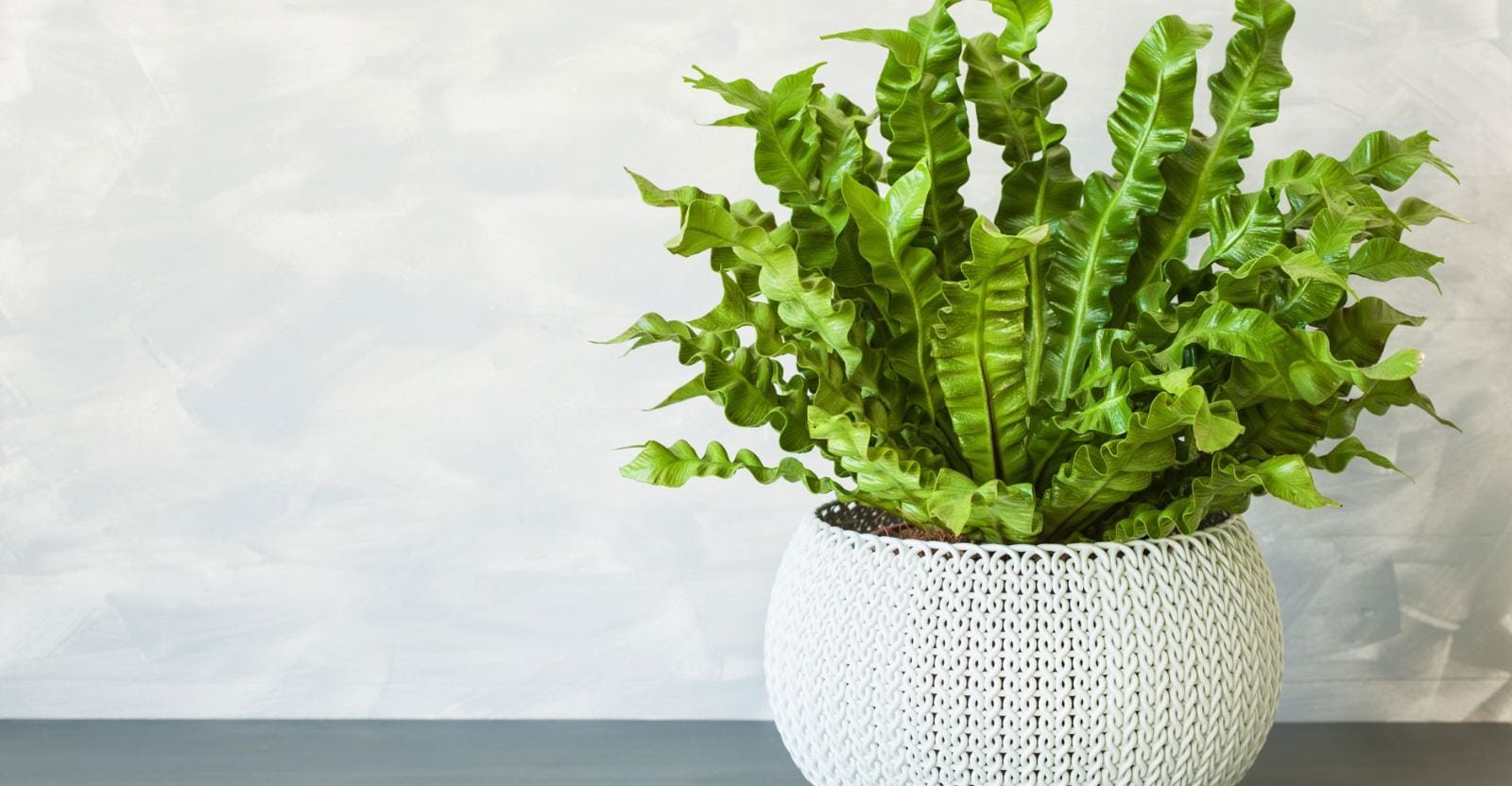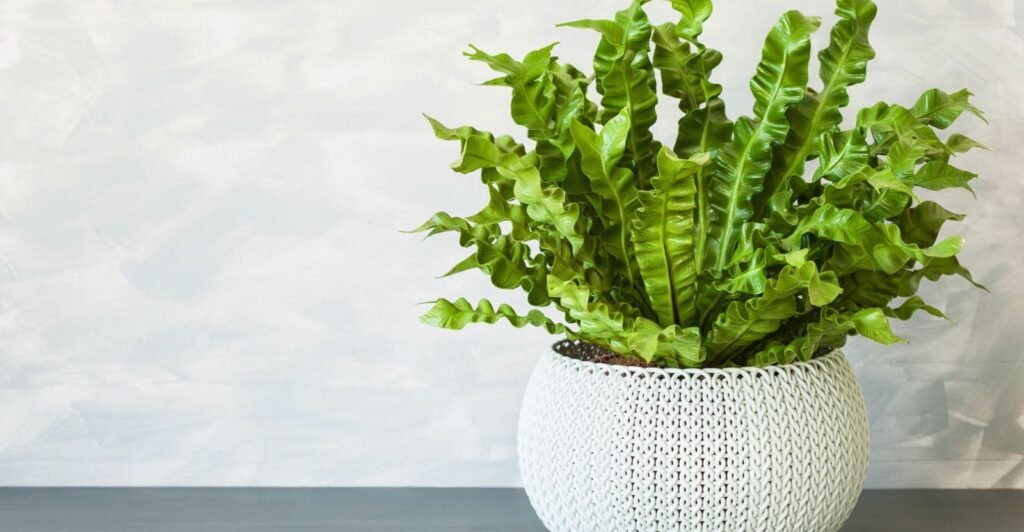
Crispy Wave Fern Indoor Care
If you’re a fan of ferns, you’re probably aware of how versatile they can be in gardens and homes. They’re great in rock gardens, in both shade and sun, and work wonders as houseplants. But with so many varieties of houseplant ferns to choose from, it can be hard to decide which one is best for your space. One standout choice for indoor gardeners is the Crispy Wave Fern, also known as the Japanese Asplenium nidus.
This fern is easy to care for, adaptable to different growing conditions, and makes a gorgeous addition to any space. While it’s not too difficult to grow, it can be a bit picky about its environment. Over the years, I’ve learned a few tips and tricks to help keep this plant thriving indoors, and I’m here to share them with you!
What is a Crispy Wave Fern?
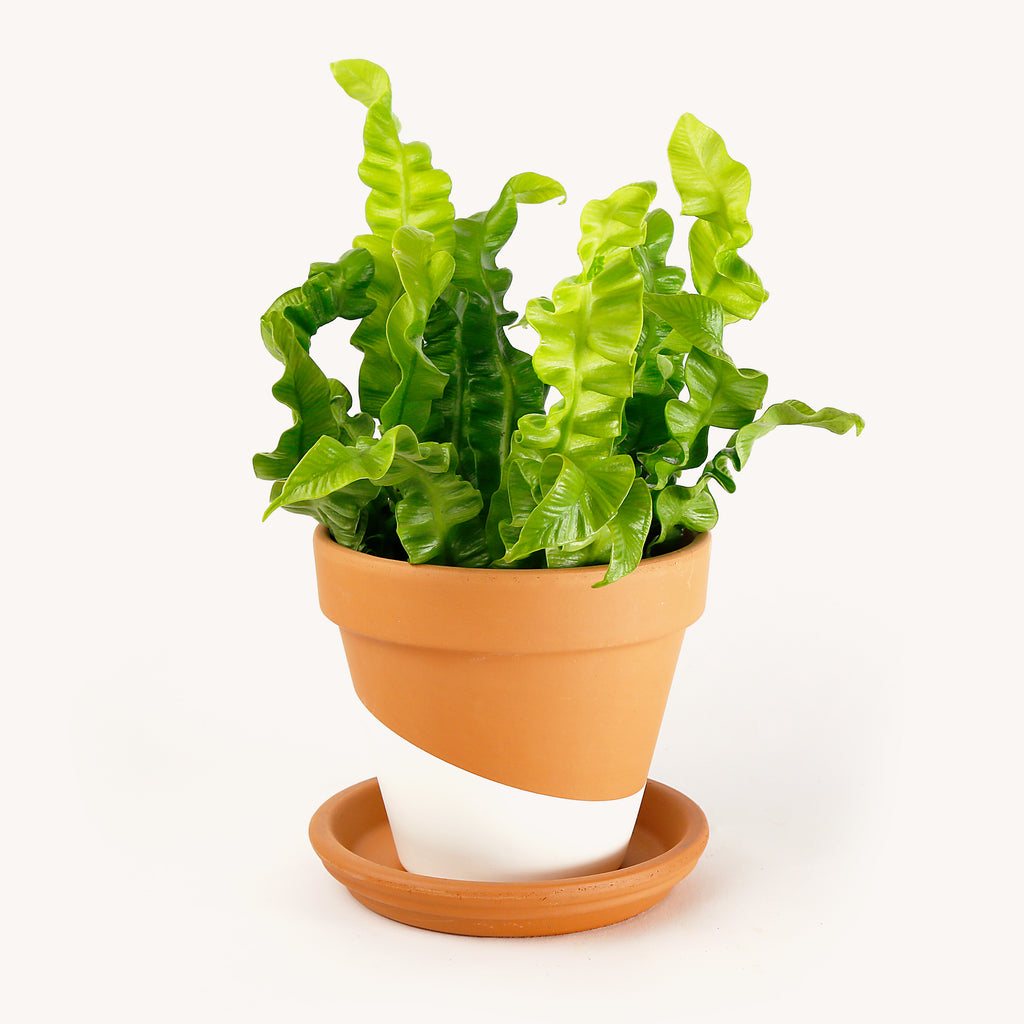
The Crispy Wave Fern is a cultivar of the low-maintenance Asplenium nidus. It’s also known as the Bird’s Nest Fern because of its unique leaf shape that radiates outwards from the center, resembling a bird’s nest. It’s a popular indoor plant because of its beautiful, glossy, green leaves that give a lush tropical look.
This fern is originally from the tropical forests of Japan and Taiwan but has since spread to other parts of Asia, Africa, Australia, and Europe. Not only does the Crispy Wave Fern brighten up your space, but it also helps purify the air by removing carbon dioxide and releasing fresh oxygen.
How Big Does a Crispy Wave Fern Get?

Crispy Wave Ferns are non-flowering plants that typically reach up to 2 feet (61 cm) in height. They are perfect for indoor spaces, adding a nice dose of greenery without taking up too much room. These ferns do especially well in small pots or hanging baskets where their feathery fronds can cascade elegantly.
If you provide the right conditions—like high humidity and consistent temperature—this fern can grow much larger outdoors. But indoors, it’s an excellent air-purifying plant that works beautifully as a living accent piece in rooms like the living room, bedroom, or kitchen.
Planting and Care Requirements for Crispy Wave Fern
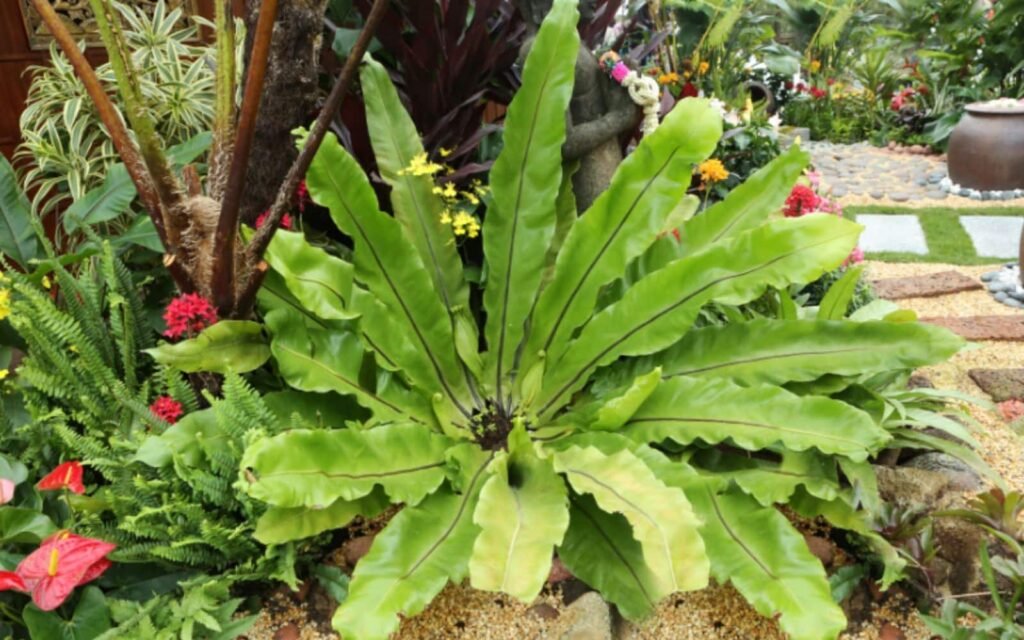
To help your fern thrive, here are some key growing conditions to follow:
- Soil: The Crispy Wave Fern loves moist but well-drained tropical soil. A tropical soil mix with good drainage works best. You can use a mix of organic potting soil, coarse sand, and perlite to create the perfect soil for this fern. Make sure the soil doesn’t retain too much water as that can lead to root rot.
- Water: Water your fern about twice a week to keep the soil lightly moist, but not soggy. Overwatering can cause the roots to rot. If you’re unsure, always check the soil moisture before adding more water. Tap water can be used, but it’s a good idea to let it sit for a few hours to help remove any chlorine or minerals that may harm your plant.
- Sunlight: Place your fern in indirect light for 3 to 6 hours a day. Avoid direct sunlight as it can scorch the leaves. A spot near a window with filtered light is ideal.
- Temperature: The ideal temperature range for a Crispy Wave Fern is between 70–90°F (21–32°C). Make sure to avoid temperature extremes—no lower than 55°F (13°C) or higher than 100°F (35°C). Keep the temperature stable for optimal growth.
- Fertilizing: During the growing season (spring and summer), feed your fern once a month with a half-strength liquid fertilizer. It’s best to dilute it to avoid overfeeding. Slow-release granules can also be used in the spring for an easier, hands-off approach.
- Humidity: This fern thrives in high humidity (60–90%). If your indoor space is dry, especially during the winter months, you can mist the plant twice a day using a spray bottle to keep the air moist. Alternatively, using a humidifier can help create the perfect environment for your fern.
Propagating a Crispy Wave Fern
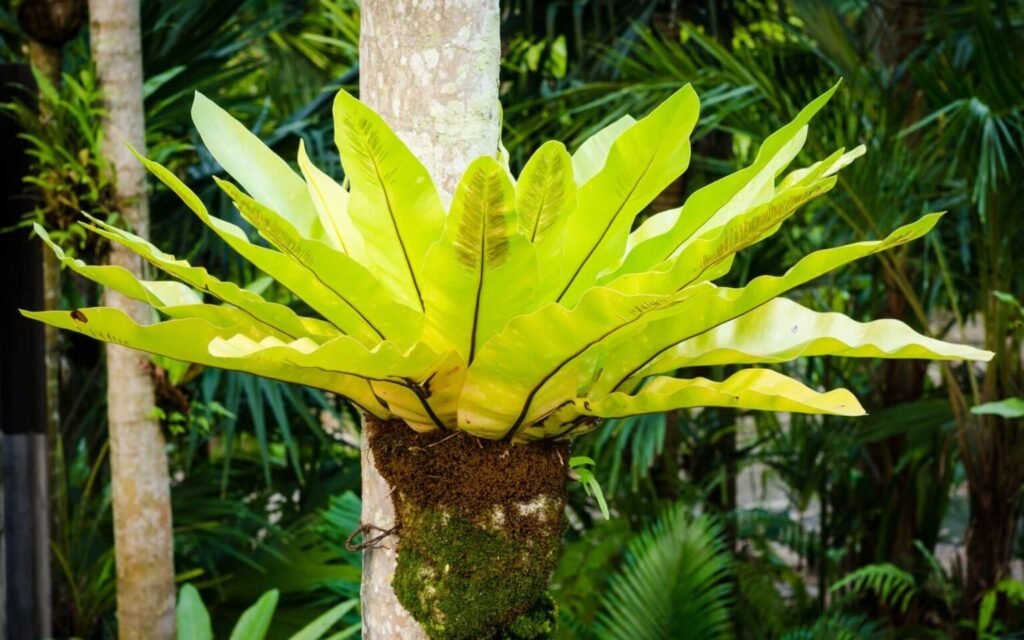
There are a few ways to propagate your Crispy Wave Fern: from spores, by division, or using leaf base bulbils. Here’s how you can do it:
Propagating from Spores:
- Collect spores in mid-summer from the underside of the fern’s fronds. Look for dark brown or black sporangia to make sure the spores are ripe.
- Cut the frond with ripe spores and place it in a plastic bag for 48 hours. Tap the bag to release the spores.
- After the spores settle, transfer them to sterilized compost (made by boiling water over it) to prevent any bacterial or fungal growth.
- Sprinkle the spores lightly on the compost and place it in a spot with indirect sunlight. Keep it lightly watered, and you should start seeing a green film covering the soil in about a month or two.
- Once the new fronds are big enough, remove them from the plastic bag and let them acclimate to normal air. When they’re ready, transfer them to a larger pot.
Propagating by Division:
- Divide the rhizome of your mature fern into 2-4 sections, making sure each division has healthy roots and shoots.
- Separate the roots carefully and plant them into their own pots. Water well and treat the new plants like you would a mature one.
Why Are the Leaves Drooping?

If your Crispy Wave Fern’s leaves are drooping, it might be due to overwatering, underwatering, or insufficient light. Make sure it’s getting enough indirect sunlight and that the soil is consistently moist but not soggy.
Another reason could be pest infestations like aphids or mealybugs that suck the moisture from the leaves, causing them to sag. If you notice any pests, remove them immediately with a mild soap solution or insecticidal soap.
Common Issues with Crispy Wave Fern

- Yellowing Leaves: This could be due to too much direct sunlight, too little water, or insufficient nutrients.
- Brown Tips: This is often a sign of low humidity or underwatering.
- Leaf Spots: Keep an eye out for leaf spots, which can be caused by overwatering or pests. Prune off damaged leaves to help the plant recover.
Final Tips for a Thriving Crispy Wave Fern:

- Keep the soil moist but well-drained.
- Water from above, ensuring the rosette isn’t sitting in stagnant water.
- Ensure your fern gets plenty of indirect sunlight.
- Provide high humidity, especially in dry climates.
- Trim damaged leaves and check for pests regularly.
By following these tips, you can enjoy a healthy, lush, and beautiful Crispy Wave Fern that will thrive for years in your home!
FAQs for Growing and Caring for Crispy Wave Fern
1. What are the ideal growing conditions for Crispy Wave Fern?
Crispy Wave Ferns thrive in bright, indirect light but can tolerate some lower light conditions. They prefer temperatures between 60°F and 75°F (15°C – 24°C) and high humidity levels, making them perfect for bathrooms or kitchens. They also enjoy well-draining, slightly acidic soil.
2. How often should I water my Crispy Wave Fern?
Crispy Wave Ferns prefer consistently moist soil, but they do not like to sit in water. Water when the top inch of soil feels dry, and be sure to water thoroughly so that water reaches the roots. Be careful not to overwater, as this can lead to root rot. During the winter months, you can reduce watering slightly, as the plant’s growth slows down.
3. How can I increase humidity for my Crispy Wave Fern?
Crispy Wave Ferns thrive in higher humidity. To increase humidity, you can mist the plant regularly, use a humidifier nearby, or place the fern on a humidity tray (a shallow tray filled with water and pebbles). Grouping it with other plants can also help create a more humid microenvironment.
4. Can Crispy Wave Fern be grown indoors?
Yes, Crispy Wave Ferns are excellent indoor plants. They prefer the humidity levels typically found indoors, particularly in bathrooms and kitchens where there’s more moisture in the air. Make sure they are placed in bright, indirect light and away from direct sunlight to prevent scorching.
5. Can I grow Crispy Wave Fern outside?
Crispy Wave Ferns can be grown outdoors in warm, humid climates (USDA hardiness zones 10-11). However, they should be protected from direct sunlight, which can burn the fronds. Outdoor conditions should also remain humid and warm for optimal growth.
6. How do I fertilize my Crispy Wave Fern?
Feed your Crispy Wave Fern with a balanced, water-soluble fertilizer every 4-6 weeks during the growing season (spring and summer). You can reduce or stop fertilizing in the fall and winter months when the plant’s growth slows. Avoid over-fertilizing, as this can cause salt buildup in the soil.
7. Why are the leaves of my Crispy Wave Fern turning brown?
Brown leaves can be caused by a few factors:
- Low humidity: Crispy Wave Ferns need higher humidity. If the air is too dry, the edges of the leaves may turn brown. Increase humidity through misting, a humidity tray, or a humidifier.
- Overwatering or underwatering: Both can cause stress to the plant. Ensure the soil is consistently moist but not soggy.
- Exposure to direct sunlight: Too much direct sunlight can scorch the leaves, leading to browning. Move the fern to a location with bright, indirect light.
8. How do I prune a Crispy Wave Fern?
To maintain the appearance of your Crispy Wave Fern, prune off any dead or damaged fronds with clean, sharp scissors or pruning shears. Pruning will help encourage healthy growth and keep the plant looking tidy. Be sure not to remove too many fronds at once, as this can stress the plant.
9. How can I propagate my Crispy Wave Fern?
Crispy Wave Ferns can be propagated by dividing the root ball. When repotting your plant, gently separate the roots into two or more sections, each with healthy fronds and roots. Replant each division into its own pot with fresh, well-draining soil. Keep the new plants in a warm, humid environment until they establish roots.
10. How do I repot a Crispy Wave Fern?
Repot your Crispy Wave Fern when it becomes root-bound or outgrows its current pot (usually every 1-2 years). Choose a pot that is 1-2 inches larger in diameter than the current one and ensure it has good drainage. Be gentle with the roots and replant the fern in fresh, well-draining potting soil.
11. Are Crispy Wave Ferns toxic to pets?
No, Crispy Wave Ferns are non-toxic to cats, dogs, and other pets, making them a great choice for households with animals.
12. How do I know if my Crispy Wave Fern is getting too much light?
If your Crispy Wave Fern is exposed to too much direct sunlight, its leaves may become scorched or develop brown spots. If this happens, move the plant to a location with bright, indirect light. While they need light, Crispy Wave Ferns do not do well in direct sunlight for prolonged periods.
Conclusion
By following these tips, you can ensure that your Crispy Wave Fern remains healthy, vibrant, and flourishing for years to come. With the right care—proper watering, lighting, and humidity levels—your fern will not only thrive but also become a beautiful and long-lasting addition to your home. Remember, consistency is key, and with a little attention, your fern will continue to bring a touch of nature and tranquility into your space for a long time. Happy gardening!

